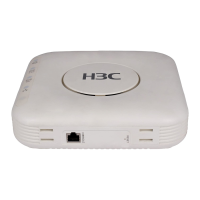10-4
To do… Use the command… Remarks
Specify the view in which the task
is executed
view
view-name
Required
By default, no view is specified for
executing the scheduled task.
time
timeID
at
time1 date
command
command
time
timeID {
one-off
|
repeating
}
at
time1 [
month-date
month-day |
week-day
week-daylist ]
command
command
Bind the execution time with the
commands in the task, that is,
configure the time to execute the
commands in the task
time
timeID {
one-off
|
repeating
}
delay
time2
command
command
Required
Use any of the commands.
z Only one view can be specified for a task, that is, all commands in the task are executed in the
specified view. If different views are specified by executing the view view-name command
repeatedly, only the last configuration takes effect.
z The view must be currently supported by the system, with its name specified using its complete
format but not an abbreviation. Most commonly used view names include: monitor for user view,
system for system view, Etherentx/x/x for Ethernet interface view, Wlan-radiox/x/x for radio
interface view, and Vlan-interfacex for VLAN interface view.
z timeID is used to uniquely identify the binding between a command and its execution time. A
scheduled task can contain up to ten commands.
z The command specified by the command command argument must be a command that can be
executed in the view specified by the view view-name command; otherwise this command cannot
be automatically executed. Therefore, ensure the correctness of the configuration.
Upgrading Device Software
Device Software Overview
Device software consists of the Boot ROM program and the system boot file. After the AP is powered on,
the AP runs the Boot ROM program, initializes the hardware, and displays the hardware information.
Then the AP runs the boot file. The boot file provides drivers and adaptation for hardware, and
implements service features. The Boot ROM program and system boot file are required for the startup
and running of a device.
Figure 10-1 illustrates their relationship.

